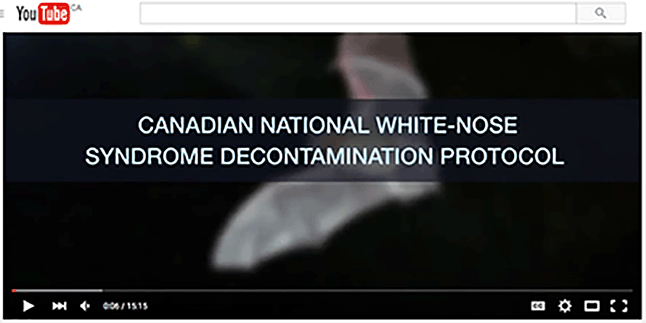
By David F. Rooney
Parks Canada is, in the wake of the discovery of a fatal case of White-Nose Syndrome near Seattle, keeping close watch in Revelstoke and Glacier National Parks says biologist Sarah Boyle.
She said in an interview on Monday, April 11, that the discovery of a dead bat in the port city at the end of March, shook up WNS watchers in our area. No one in western Canada had been expecting to see a case of WNS for years to come. White-Nose Syndrome is a fungal disease from Europe that has killed more than 10 million bats in eastern North America since it arrived here a few years ago.
The fungus manifests itself as a white powder that coats the noses, ears, fur and wings of contaminated bats. It does not affect humans, although people can inadvertently carry it from place to place. The fungus has reached the Great Lakes but has not yet crossed into Manitoba. Scientists like Boyle had thought this pause in its westward movement had given them a window of a few years to prepare for its arrival in BC.
Alas that is no longer true. And now, with the arrival of spring and the expected emergence of local bat populations from their winter hibernation, scientists are also asking members of the public to help them by keeping their eyes open when they see bats. They also hope members of the general public will carefully inspect dead bats when they see them, Boyle said.
Towards that end they have produced a video that can help them do that. This video presents the best decontamination techniques to curb the spread of the fungus causing White-Nose Syndrome affecting several North American species of bats. It demonstrates how to use the national decontamination protocol developed by the Canadian Wildlife Health Network (WSN). The video, Canadian National White-nose Decontamination Protocol, is available on Youtube https://www.youtube.com/watch?v=kQjALbixJKY.
Bats are essential species. Humans depend on them to eat the insect pests that torment us, and those that devour our crops and forests.
Please click on the links below to read our previous stories:
- https://legacy.revelstokecurrent.com//2016/04/09/white-nose-syndrome-makes-an-unexpected-appearance-near-the-kootenays/
- https://legacy.revelstokecurrent.com//2015/10/29/deadly-bat-killing-wns-not-yet-here/
- https://legacy.revelstokecurrent.com//2013/08/01/theres-a-killer-called-wns-on-the-way-west-and-parks-canada-wants-to-know-how-bad-wns-could-be-when-it-gets-here/



